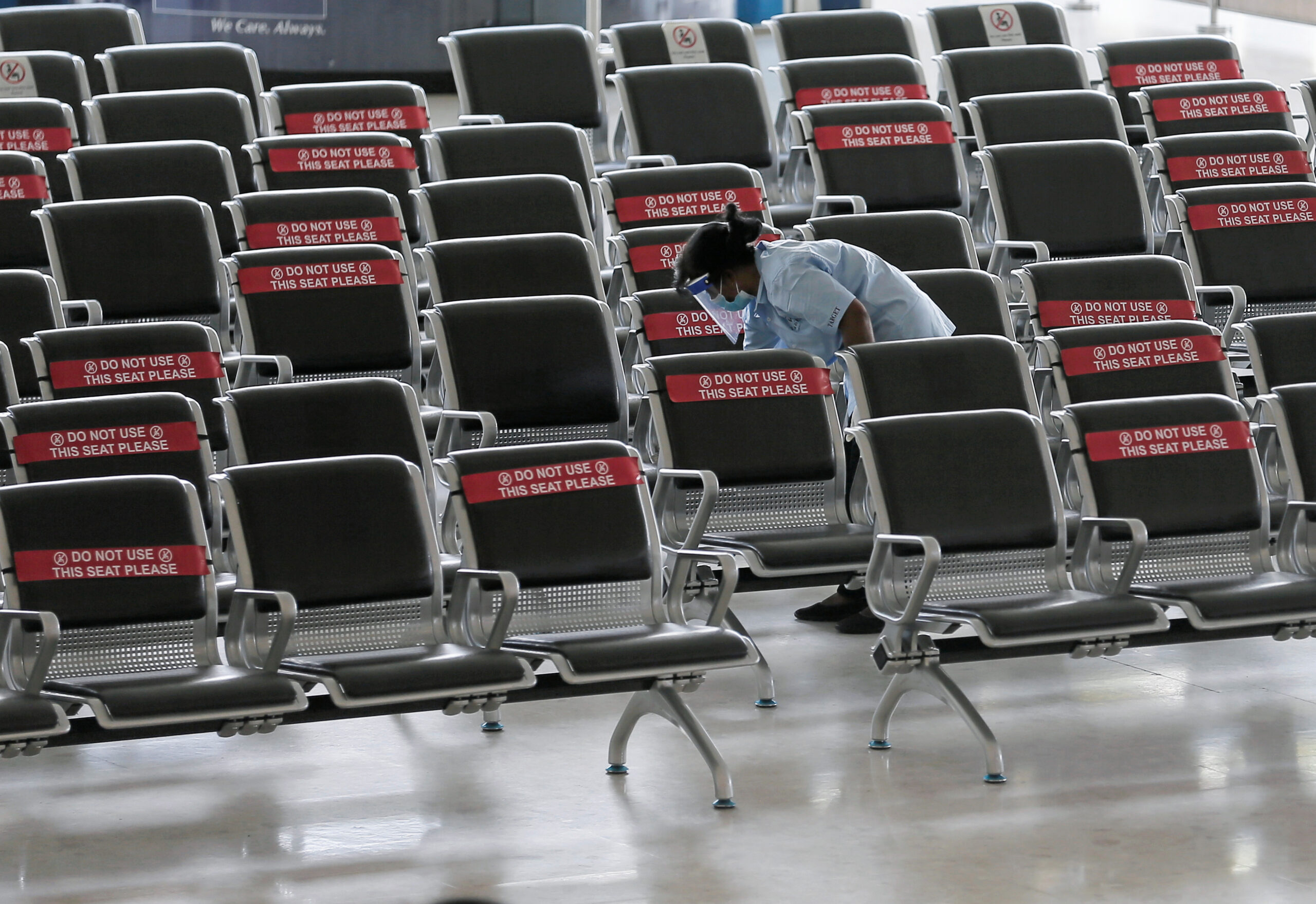(CNN) – The US Centers for Disease Control and Prevention added six destinations to its “high” risk category for travel on Monday.
Two Central American countries — El Salvador and Honduras — received a level 3, “high” risk designation. Bangladesh, Bosnia and Herzegovina, Poland and Fiji were also added to Tier 3.
Level 3 became the highest level of risk in April after the CDC revised its rating system for assessing Covid-19 risk for travelers.
The designation applies to places that have had more than 100 cases per 100,000 inhabitants in the past 28 days. Level 2 and Level 1 are considered “moderate” and “low” risk, respectively.
To summarize, these six destinations received “high” risk designations on Monday:
• Bangladesh• Bosnia and Herzegovina• El Salvador• Fiji• Honduras• Poland
There were more than 120 destinations at Level 3 on July 25. Level 3 sites account for about half of the approximately 235 sites monitored by the CDC.
Level 4, previously the highest risk category, is now reserved only for special circumstances, such as extremely high case counts, emergence of a new variant of concern or health infrastructure collapse. Under the new system, no destinations have been placed at Level 4 so far.
More on Level 3
Much of Europe has been stubbornly lodged at Level 3 for months with the summer travel season in full swing. On the same subject : High-tech track passes to reduce waiting times to 25 seconds. As of July 25, the following popular European destinations were among those remaining at Level 3:
• France• Germany• Greece• Ireland• Italy• Netherlands • Norway• Portugal • Spain• United Kingdom
Those aren’t the only high-profile locations that are at Level 3. Many other destinations around the world are among those in the “high” risk category, including the following:
• Brazil • Canada• Costa Rica • Malaysia• Mexico • South Korea• Thailand• Turkey
The CDC advises that you be up-to-date on your Covid-19 vaccines before traveling to a Tier 3 destination. Being “up-to-date” means that you have received not only the full initial vaccinations but any boosters you are eligible for.
Level 2
The Philippines, with the image of Coron Island, moved up to a “moderate” risk on Monday. Read also : CDC reduces Covid-19 travel risk for 2 nations in Europe.
Targets labeled “Level 2: Moderate Covid-19” have reported 50 to 100 cases of Covid-19 per 100,000 residents in the past 28 days. The CDC designated five new Level 2 sites on Monday:
• Equatorial Guinea • India• Moldova• Philippines • Togo
The move was bad news for all five sites that moved up from Level 1. There are fewer than 20 sites in the “moderate” risk category this week.
In its broader travel guidance, the CDC recommends being up to date with your vaccines before traveling internationally.
Level 1
To be listed as “Level 1: Covid-19 Low”, a destination must have 49 or fewer new cases per 100,000 residents over the past 28 days. To see also : Europe Travel Restrictions, Covid-19 Testing Requirements, by Country, for July. Two new locations were added to the category on July 25: Angola and Comoros.
There are more than 30 places in the “low” risk category this week.
Some of the more popular places in the “low” risk category this week include Indonesia and Tanzania.
Unknown
Finally, there are the destinations that the CDC has deemed to be of “unknown” risk due to a lack of information. Usually, but not always, these are small, remote places or places with ongoing warfare or unrest. Two locations were added this week: Dominica and Ethiopia.
The CDC advises against traveling to these places precisely because the risks are unknown. Other destinations in this category that typically attract more tourist attention include French Polynesia, Hungary, Macau and the Maldives.
There are nearly 65 locations listed as “unknown” this week.
A medical expert assesses risk levels
A medical expert weighs in on risk levels
Transfer rates are just “one guidepost” for travelers’ personal risk calculations, according to CNN Medical Analyst Dr. Leana Wen.
We’ve moved into “a phase in the pandemic where people have to make their own decisions based on their medical circumstances as well as their risk tolerance when it comes to contracting Covid-19,” said Wen, who is an emergency physician and professor. in health policy and management at the George Washington University Milken Institute School of Public Health.
There are other factors to weigh besides transmission rates, according to Wen.
“Another is what precautions are required and followed in the place you are going, and the third is what you plan to do once you are there,” she said.
“Do you plan to do a lot of sightseeing and go to indoor bars? That’s very different than going somewhere where you plan to lie on the beach all day and not interact with anyone else. That’s very different. Those are very different levels. of risk.”
Vaccination is the most important safety factor for travel, as unvaccinated travelers are more likely to get sick and transmit Covid-19 to others, Wen said.
And it is also important to consider what you would do if you end up positively away from home.
While U.S. travelers no longer have to present a negative Covid-19 test to return home from international destinations, the CDC still advises testing before boarding flights back to the U.S. and not traveling if you are sick.
“Of course, if people have symptoms or exposure while traveling, they should be tested, and if they test positive, follow the CDC’s isolation guidelines,” Wen told CNN Travel recently.
If you are concerned about a travel-specific health situation not related to Covid-19, check here.
Main image: Roatan Island, Honduras (Philippe Turpin/Photononstop RF/Getty Images)




